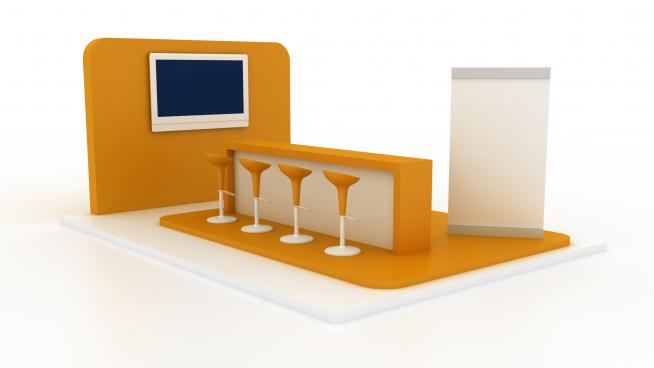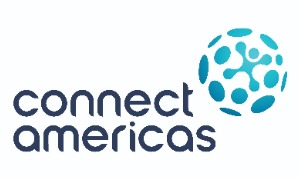- Make sure the show you’ve chosen is well aligned with your objectives
- Consult the resources available to you through your national or local export promotion agency
MARKETING
Trade shows: how to maximize the benefits of attending?
Participating in international trade shows can be an effective channel to access foreign markets. Trade shows offer a single, short-term venue to network, market, and keep tabs on competitors and innovation.

HIGHLIGHTS
There’s a good chance that a trade show exits for your products or services. The Center for Exhibition Industry Research states that over 14,000 trade shows are held each year in the United States, Canada, and Mexico alone. PROMEXICO defines international trade shows as large events designed to facilitate commercial transactions between businesses from around the world and outlines many of the advantages of attending a trade show in its 2010 preparation guide.
Why go to trade show?
- More customers, less time: A perfect opportunity to network, discover clients, and generate new leads, trade shows serve as a specialized marketing tool designed to accelerate relationship building and sales by linking buyers, sellers, and other stakeholders from common industries.
- Personal contact and receptivity: Live shows allow sellers to appeal to all a buyers senses when showcasing products or services and highlighting competitive advantages. The nature of a trade show provides a unique opportunity for the direct personal contact critical for building confidence and closing a sale. Buyers themselves are in an ideal state of receptivity as they are actively looking to take advantage of having multiple vendors in one place. They want to pose questions. They want to physically examine and experience both products and the people behind them. Shows can also be an excellent way to impress and attract investors or reconnect with existing clients, and maintain a positive image.
- Higher return on investment (ROI): Trade shows are an effective non-mass media tool to market your company and its products, new and existing. The African Global Competitiveness Initiative identifies trade shows as the most accessible best practice for connecting to new markets. Trade shows tend to exhibit higher rates of return than typically found with direct marketing and advertising which are primarily successful in cases where the industry is small, organized, and scarce in supply, or when the character of the consumer market is well understood. Think of it this way: one day spent at an exhibition provides access to more clients from more places than one could ever visit during a typical workday.
- Study your market: consumers, competitors, and innovation: Simply being present is often a cost-effective way to perform market research, stay informed on industry trends, and check out the competition up close. It is also common for fairs to include workshops, trainings, seminars, trade talks, and other activities geared towards expanding the skills, capacity, and knowledge of participants. If you’re not ready for the investment involved in hosting a full exhibition, registering as an attendant will still give you the opportunity to make contacts and gather market intelligence.
Choosing a show
PROMEXICO broadly categorizes trade shows into the following types:
- National vs. international
- Professionals only vs. open to general public
- General or multi-sector
- Sector or product specific
- Informational trade shows – primarily seminars and technical sessions
- World Trade – individual country participation promoting national economy and culture
Research and assess your options with great care to make sure the show you’ve chosen is well aligned with your objectives. Trade shows can be a major investment with preparation demanding much in time, money, and people. For guidance in choosing the right show, consult the resources available to you through your national or local export promotion agency. Many sites highlight important shows by date and industry, prioritizing those of most relevance to national industries. Check regularly as many agencies also offer incentives or assistance for participation. The International Trade Centre (ITC) website offers a listing of trade institutions by country (LEFT: ITC by Country>select country>Trade Contacts).
Agriculture and Agri-Food Canada (AAFC) recommends proactively contacting show organizers and any other available resources well ahead of your choice to commit to an exhibit. Doing so will help you make a well-informed choice and better understand the value of the shows being considered.
Determine Export Readiness
Reflect on how ready you are to export. What specific country or region offers the best opportunities for your product? How familiar are you with transport logistics, contracts, and negotiation in an international context? Are you legally registered with the proper governmental agencies in your country?
The International Trade Centre (ITC) offers a wealth of resources on its Exporters page, including some of the following:
- Contract templates: Eight generic contract templates that incorporate internationally recognized standards and laws for most small business situations.
- Sector Reports: Detailed reports and analysis on specific markets in the following sectors: food & agribusiness, manufactured goods, trade in services, fair trade and environmental exports.
- Market data and information: Market analysis tools and related market data and information sources to help exporters and importers alike identify opportunities and improve efficiency.
Identify goals and intentions
Clearly identifying your export and business goals before considering a trade show will help you make the best decision about which show will bring your company the most value. AAFC suggests asking some of the following questions:
- What do you want out of the trade show?
- Which is your target market and audience?
- How will the show you choose complement your export strategy?
- Are you able to devote the necessary resources in human, financial, and time?
After thinking through these questions and deciding on a show, you can begin the process of creating and executing the right exhibit.
BIBLIOGRAPHY
Guía Online sobre la preparación de visitas a Ferias Internacionales. Plan Cameral de las Exportaciones. Retrieved October 17, 2013.
Holm-Olsen, Finn. Best Practices in Overseas Representation. USAID African Global Competitiveness Initiative. May 18, 2009.
International Trade Centre. Exporters. Accessed October 23, 2013.
KEYWORDS


Follow Us